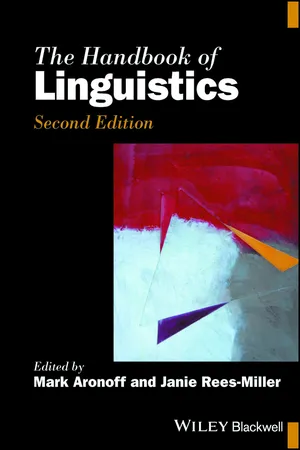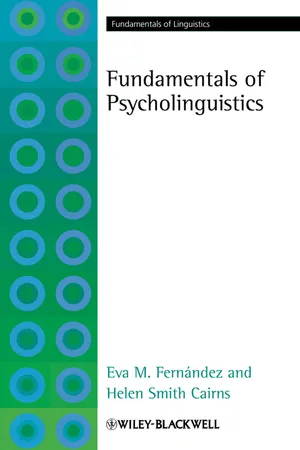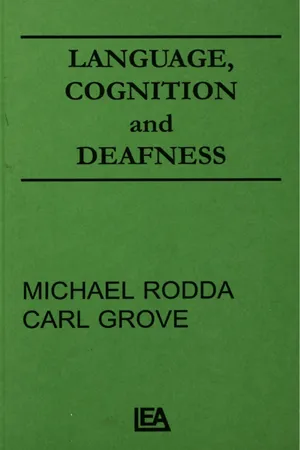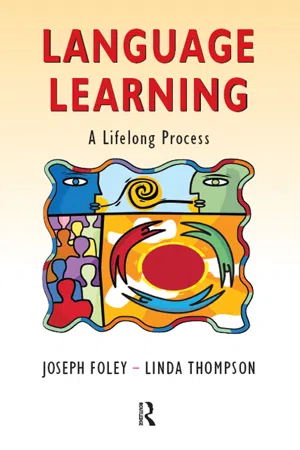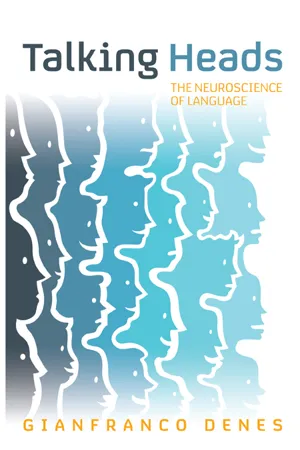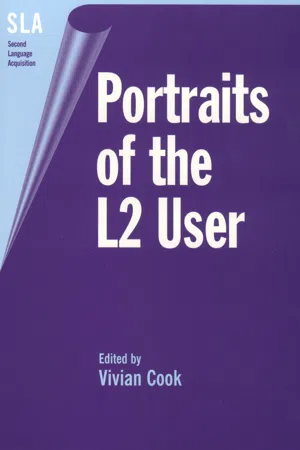Languages & Linguistics
Functional Basis of Language
The functional basis of language refers to the idea that language serves specific functions in communication, such as expressing thoughts, emotions, and intentions. This concept emphasizes the role of language in facilitating social interaction and conveying meaning. It also encompasses the idea that language structures and features have evolved to fulfill these communicative functions.
Written by Perlego with AI-assistance
8 Key excerpts on "Functional Basis of Language"
Learn about this page
Index pages curate the most relevant extracts from our library of academic textbooks. They’ve been created using an in-house natural language model (NLM), each adding context and meaning to key research topics.
- eBook - ePub
- Mark Aronoff, Janie Rees-Miller, Mark Aronoff, Janie Rees-Miller(Authors)
- 2017(Publication Date)
- Wiley-Blackwell(Publisher)
Not all linguists share Chomsky's view, however, and many are strongly committed to a view of language which takes its role in communication as central to its study and analysis; they are not the majority in the field at present. Such linguists are referred to as functionalists, and the general term applied to this approach is functional linguistics. Within contemporary linguistics there is an opposition between functionalists, on the one hand, and formalists, on the other, formalists being those linguists who are in substantial agreement with Chomsky's position. As we will see later, this distinction has evolved into a more subtle and complex opposition than it might seem at first glance. The goal of this chapter is to introduce the reader to the basic ideas of functional linguistics and to give an account of how the ideas that today constitute functional linguistics arose. It will also be explained how many professional linguists came to adopt a view of language which is so strikingly at odds with the view held by nonlinguists. 1 In Section 2, a number of terms and distinctions will be introduced that are relevant to elucidating functionalist and formalist approaches to the study of language. In Section 3, a brief history of twentieth-century linguistics will be given and the development of the relevant ideas about language structure and function will be sketched. In the final sections, contemporary functional linguistics will be characterized and contrasted with formal linguistics, to see how genuine the opposition really is. 2 Communicative Functions of Language What does the proposition “the primary function of language is communication” actually mean? What are the communicative functions of language? Many traditional accounts portray communication as being the conveying of propositions from the mind of one interlocutor to the mind of one or more other interlocutors, and the propositions are about some state of affairs, real or imagined - eBook - ePub
Applying Linguistics in the Classroom
A Sociocultural Approach
- Aria Razfar, Joseph C. Rumenapp(Authors)
- 2013(Publication Date)
- Routledge(Publisher)
11 Functions of Language Using Language around the World Learning Goals- Understand the functional approach to language study.
- Explain and exemplify different functions of language.
- Understand the importance of language in relationship building.
- Analyze cultural differences in the building of relationships through language use.
- Develop student inquiry through cultural analysis.
KEY TERMS/IDEAS: functions of language, languaculture, speech act, speech eventIntroductionThroughout this book, we have shown how language is used to accomplish specific purposes in a wide range of contexts and culturally organized activities. Again, we revisit the discussion of what constitutes the stability of language across time and space, and how does it vary from one activity to another. While we have provided many examples of various language functions, in this chapter we will discuss some viable candidates for common language functions shared between the world’s languages. In structural linguistics, common features of phonology, morphology, and syntax are described as linguistic universals. Similarly, we ask, “What are some functional and cultural universals of language?” Cultural universals, or functional universals, are different from linguistic universals in that they are not biological traits contained within the individual. Instead, the idea of functional universals is based on the idea that people from around the world have similar needs, problems, and purposes. As a result they organize similar activity systems and semiotic practices. These shared meaning-making systems from around the world have shared language functions.Early in this book we examined linguistic universals from a cognitive and linguistic point of view. Ideas like Chomsky’s Language Acquisition Device (LAD) and Pinker’s language instinct sought to account for the nature, function, and purpose of human grammar. This nativist account of language and its universal properties was assumed to be generalizable to all human beings. An assumption based, not on empirical evidence and actual human uses, but on deduction and an axiomatic truth (a fact accepted without evidence). However, in a functional approach to linguistics, and “linguistic universals,” we note that these “universals” are inductively discovered through case studies and empirical evidence of human langua - eBook - ePub
- Eva M. Fernández, Helen Smith Cairns(Authors)
- 2010(Publication Date)
- Wiley-Blackwell(Publisher)
3 The Biological Basis of LanguageLanguage Is Species Specific Language Is Universal in Humans Language Need Not Be Taught, Nor Can It Be Suppressed Children Everywhere Acquire Language on a Similar Developmental Schedule Language Development Is Triggered by the Environment Anatomical and Physiological Correlates for LanguageLanguage lateralizationNeuroanatomical correlates of language processingThe search for a genetic basis for languageReading and Writing as Cultural Artifacts Summing Up New ConceptsStudy QuestionsPsycholinguistics is a field primarily concerned with how language is represented and processed in the brain. The focus of this book is, therefore, on language as a system controlled by the brain that is different from but closely linked to general cognition. As such, language is an aspect of human biology. We will explore some of the evidence that psycholinguists – and scholars in related fields – have uncovered linking language to human biology. This chapter will also help you distinguish between language as a biological system and language as a sociocultural artifact.The organization of this chapter is based on an important historical precedent. Over 40 years ago a neurologist named Eric Lenneberg adduced five general criteria that help determine whether a system is based in the biology of a species (Lenneberg 1964, 1967). These criteria, each described in the sections that follow, are as valid today as they were then, and we will use them to frame the arguments for the biological basis of language. According to Lenneberg (1967: 371–4), a system is biological if: - eBook - ePub
Foundations in Sociolinguistics
An ethnographic approach
- Dell Hymes(Author)
- 2013(Publication Date)
- Routledge(Publisher)
In speaking of “functions,” I do not intend to raise here the many issues that attach to the notion of “functionalism” in the social sciences, and, more generally, in the philosophy of the sciences and humanistic disciplines. I use the term first of all because its use by the Prague School has associated it with the perspective developed here, and because it does seem the appropriate general term for a necessary idea. In their methodological, reflections on worlds of human knowledge, scholars such as Ernst Cassirer and Kenneth Burke have found the question of function, and, in human action, the question of the function known as purpose, indispensable. That the burden of proof lies with the advocate of the relevance of concern with such questions in linguistics today, does not reflect the nature of language, but the limitations of current linguistics. The burden of proof ought to be, and I believe will come to be, on those who think that linguistics can proceed successfully without explicit attention to its functional foundations.I do not try to say here what functions speech has overall or in particular communities. I try only to show that, whereas linguists usually treat language in terms of just one broad type of elementary function, called here “referential,”44 language is in fact constituted in terms of a second broad type of elementary function as well, called here “stylistic.” Languages have conventional features, elements, and relations serving referential (“propositional,” “ideational,” etc.) meaning, and they have conventional features, elements and relations that are stylistic, serving social meaning. Substantive functions, in the sense of human purposes in the use of speech, employ, require, and indeed give rise to characteristics of both kinds. A general study of language comprises both, and even a study seeking to limit itself to what is referentially based cannot escape involvement with what is not. Involvement with stylistic function, and social meaning, reveals that the foundations of language, if partly in the human mind, are equally in social life, and that the foundations of linguistics, if partly in logic and psychology, are equally in ethnography (cf. Hymes 1964a: 6, 41).The term “function” is so readily misunderstood in linguistics today that I should explain something I do not - eBook - ePub
- Michael Rodda, Carl Grove(Authors)
- 2013(Publication Date)
- Psychology Press(Publisher)
6 THE PHYSIOLOGICAL BASIS OF COMMUNICATION In preceding chapters we have discussed the contribution made by linguistics and cognitive psychology toward understanding and overcoming the problems of prelingually deaf students and adults. In this chapter, we ask the reciprocal question: What do the psychological and linguistic phenomena associated with deafness tell us about fundamental issues in human cognition? We approach this question in two ways: first, by examining the neurophysiological factors linked with language and communication, and second, by considering the role of communication in the evolution of mankind. If sign language does share the formal distinguishing features of natural language, does this imply that the one is derived from the other, or that they share a common source? Brain Mechanisms and Language Innate Language Programming? Of all the species inhabiting this planet, modern man (Homo sapiens sapiens) is the only one to employ language, a fact that has led many writers to claim that language is the critical characteristic of humanity. As we saw in chapter 3, there is a lot of evidence concerning the structural and functional basis of natural language; and the research of the Salk Institute implies strongly that American Sign Language possesses all the formal attributes of spoken communication systems. But is language a special feature of human evolution, or does it merely reflect the generalized increase in cognitive capacity that has led mankind to its present privileged status? The behaviorist school, which dominated psychology in the 1930s and 1940s, inclined strongly to the view that language had no special status: It was simply one piece of behavior among many others that humans could acquire by building up chains of stimulus-response (S-R) connections. It was this typically overstated claim that led directly to the demise of behaviorism as an explanation of language - eBook - ePub
Language Learning
A Lifelong Process
- Joseph Foley, Linda Thompson(Authors)
- 2017(Publication Date)
- Routledge(Publisher)
Our description of what does it mean to learn language(s) gives equal emphasis to language as a functional resource for getting things done in social contexts with language as a cognitive resource, for thinking and understanding. We emphasize language as a social and as an internalized cognitive resource for building a view of the world. We stress languages as the channel and resource, with which and through which the child learns to create and build taxonomies. In this sense language includes a number of complementary dimensions that can be summarized in the following diagram.Figure 4.4Language metaredounding with register, metaredounding with genre (Christie & Martin 1997: 08)This description of learning language places social contexts as central to learning language. Others, including the sociologist Basil Bernstein (1971 and 1990), have shown that certain types of social context are critical to the process of cultural transmission. The language of these contexts plays a crucial role in the child’s socialization and enculturation into the appropriate social and cultural behaviours of the community where the child is being raised. Halliday’s description, which places all language behaviour mediated through the basic functions of language, is linked to what Malinowski termed ‘context of situation’. These language functions are part of human behaviour. They lie at the heart of the linguistic system and hence can be interpreted as the ‘context of culture’ (to use another of Malinowski’s concepts). The significance of this description is that it explains the way in which language comes to occupy a central role in the process of social and learning, as well as cognition. This may account for the fact that many critics choose to forget when they refer to Halliday’s description of learning a language, and perhaps surprisingly is, the fact that intonation, a complex feature of language use, much neglected by descriptive linguistics, lies at the heart of the Hallidayan description of learning language(s).Central to this description of language development is the concept of the social functions that are achieved with and through language. The original social functions survive in the concrete sense as types of situation and setting, the social contexts in which language serves in the transmission of culture to the child. We can now expand the list of key features unique to a systemic description of learning language presented earlier to include: - eBook - ePub
Talking Heads
The Neuroscience of Language
- Gianfranco Denes, Philippa Venturelli Smith(Authors)
- 2012(Publication Date)
- Psychology Press(Publisher)
9 The neurological bases and functional architecture of bilingualismOver 50% of the human species can be defined as bilingual or plurilingual1 in that they use more than one language in written or spoken form in everyday life, although the degree of competence and the frequency of use vary (Paradis, 1998a, 1998b). This percentage is destined to increase and so it is not surprising that over the last few years a huge number of studies have addressed this subject. The goals of these studies are often different and may be interdisciplinary, such as attempts to pinpoint the neural bases of bilingualism and to clarify the nature and representations of the cognitive processes underlying the learning and use of different languages, as well as the functional and anatomical relationship between languages.In this chapter we review the neurological bases underlying language processing in polyglots using clinical data (aphasia in polyglots) and results obtained from neuroimaging studies carried out on normal participants. In particular, we attempt to clarify whether the process of learning and use of a second language (L2) possesses the same neural bases as that of the native language (L1) or whether it involves different structures. Finally we consider whether possible involvement of the aforementioned structures is dependent on factors such as the degree of linguistic competence and/or the age of exposure to the second language. - eBook - ePub
- Vivian Cook(Author)
- 2002(Publication Date)
- Multilingual Matters(Publisher)
Such grammars may even provide clues as to what all grammars, considered as instantiations of the human language capacity, may share. I believe this, but such a claim takes us too far afield for present purposes. I will merely attempt to show that even the most basic user of a second language produces utterances that are recurrent, highly structured, and not to be explained by a direct appeal to the grammar of the first language (L1) nor to that of the language being learned/used (the L2). The word ‘direct’ in the last sentence is important. Obviously I do not wish to imply that the L1 grammar, or the L2 input, do not influence the organisation of the learner’s variety. They do, but other factors can – will – be shown to mediate in the way the learner’s variety is organised. Thus any attempt to explain the organisation of the learner’s variety at a given time, or over time, which appeals only to L1 and L2 factors is inadequate.The reader will have noticed that in this introduction I have referred only to the learner’s production, and I will stick with this restriction. The chapter will also look only at a very small part of the linguistic phenomena relevant to the L2 user/acquirer, namely the way in which utterances are structured and temporal relations expressed. I therefore have nothing in particular to say about phonology, nor the lexicon.2 The Functional Approach
Functionally oriented linguistics traditionally holds that language is an instrument for human communication that can best be understood by an analysis of the interaction of its various levels of organisation – phonology, (morpho-)syntax, semantics – and its contexts of use. Leaving phonology aside, this description immediately implies that the grammar of a language involves two types of computation.The first type deals with the well-formedness conditions on sentences: how minimal meaningful units are combined into larger lexical items and how these items combine to form larger constituents up to the level of the sentence (‘sentence grammar’). Such rules describe, for example, the sentence category ‘subject’: ‘the finite verb agrees in person and number with the subject’ or, in a more modern variant, ‘nominative case is licensed by AGR’. They also give distributional restrictions such as the following: ‘a matrix sentence may contain only one finite verb’.The second type deals with the conditions under which a sentence may be actualised as an utterance in the situational (or discourse) context. Amongst other things, the contextual information is specified which provides a referential value to the lexical meanings of deictic and anaphoric expressions. Such rules describe, for example, the discourse category ‘topic’: ‘the topic of an utterance is identifiable for speaker and hearer, and is the entity about whom/which the speaker intends to increase the hearer’s knowledge’. They also specify the temporal or aspectual value of the finite verb in context, as we shall see in section 4.2. This is what Klein (1994) calls ‘structure-based context dependency’, and what I will term the ‘context relating’ or ‘anchoring’ rules.
